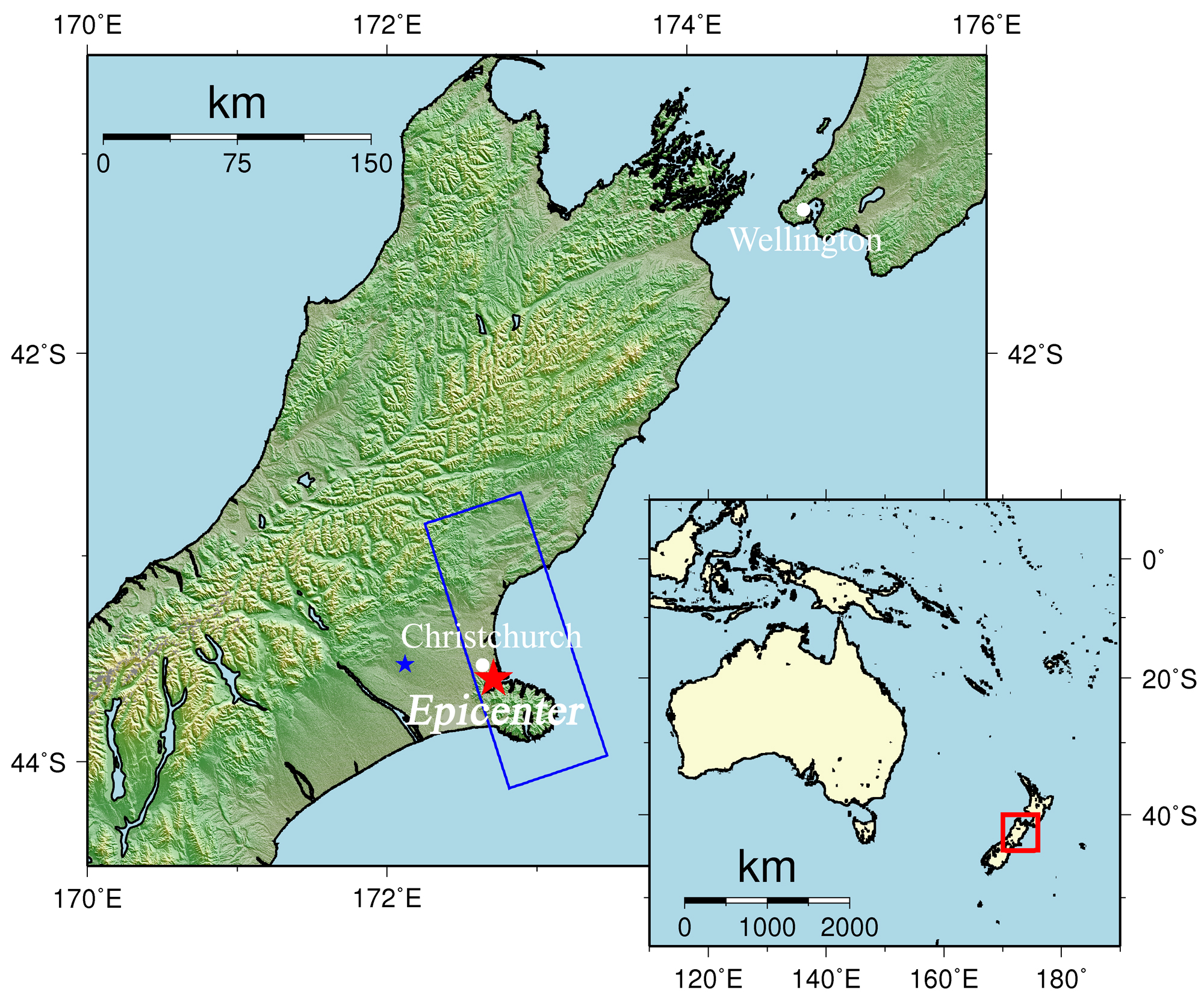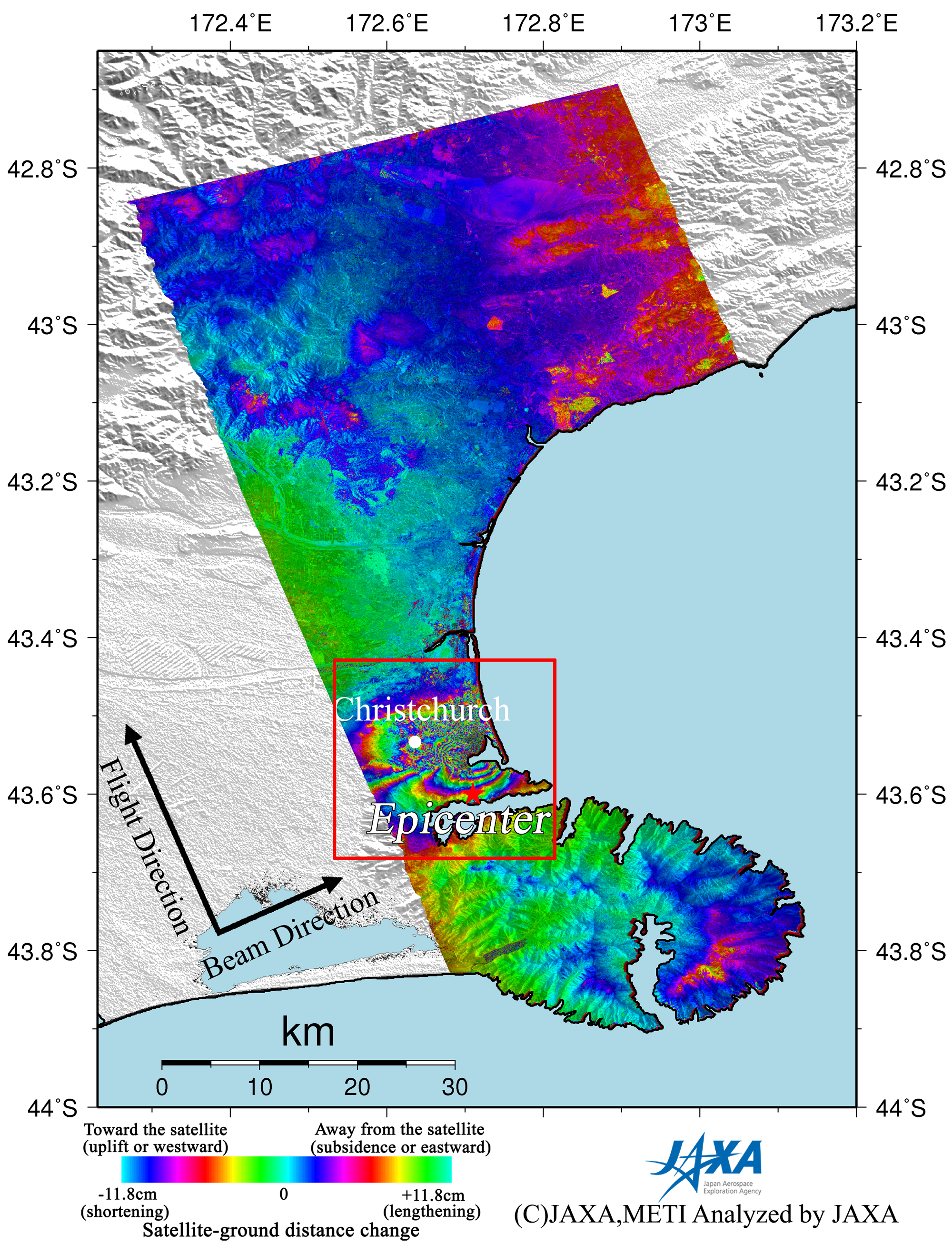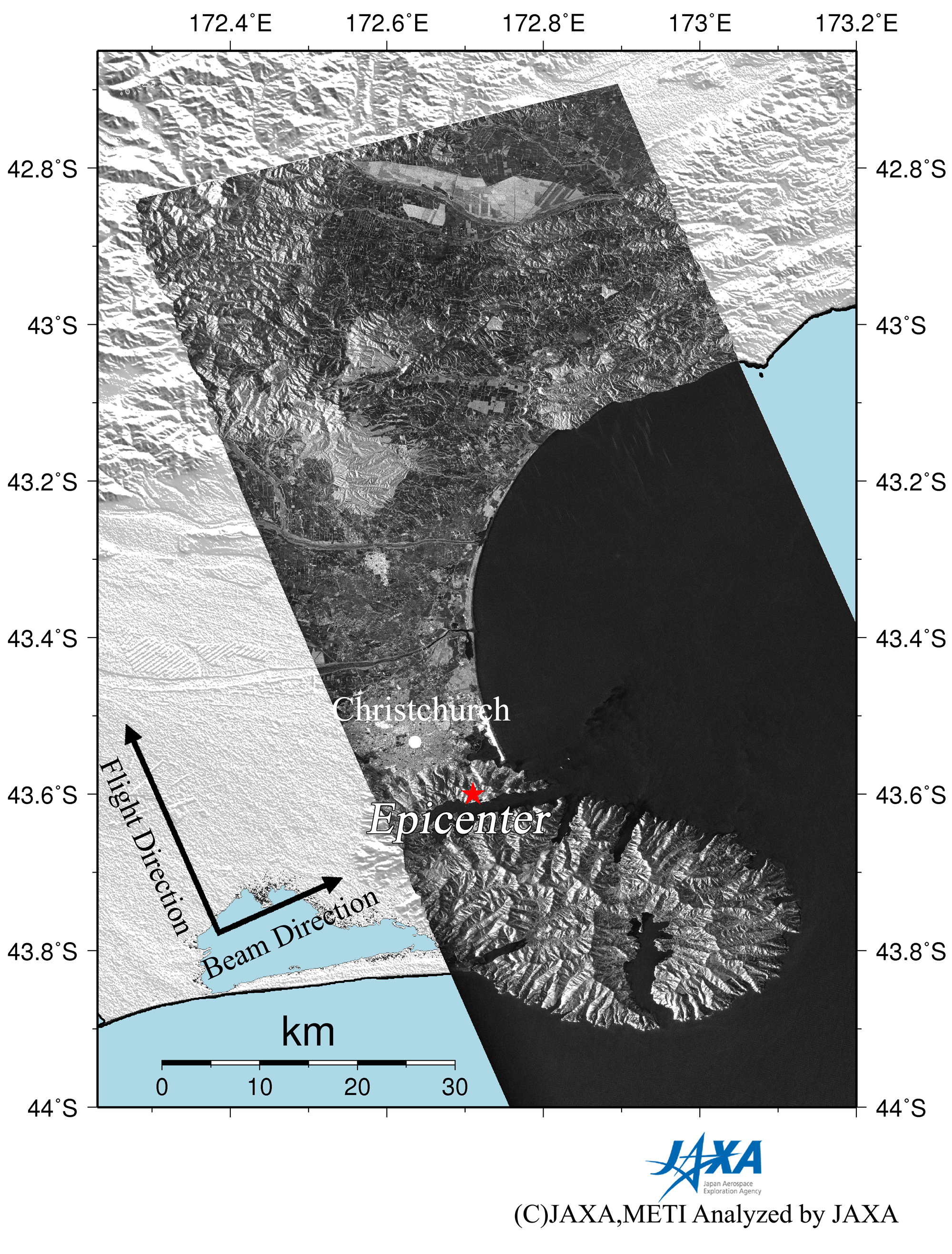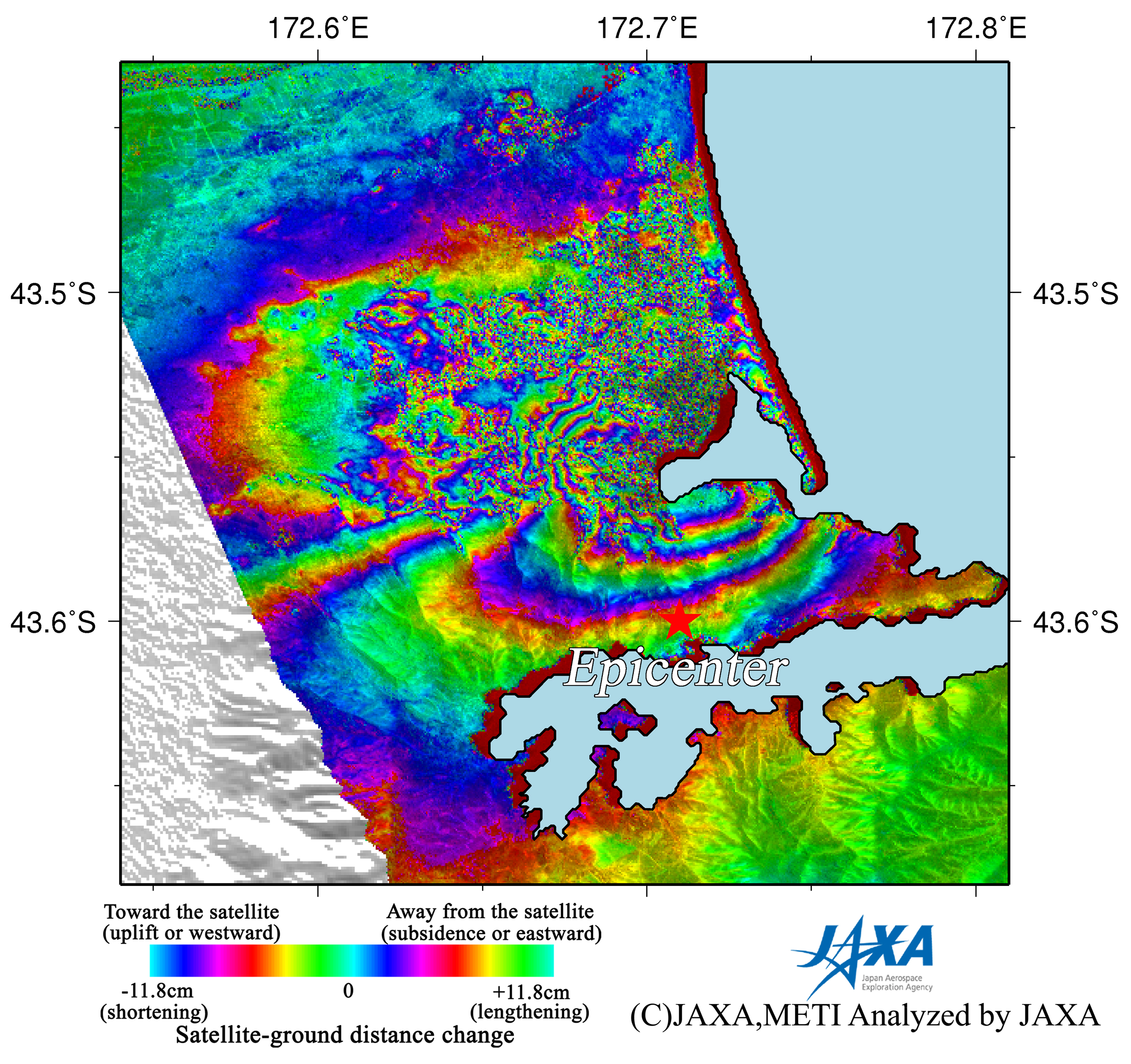Image Library
ALOS/PALSAR Observation Results of the Magnitude-6.3 Earthquake in the South Island of New Zealand in 2011
On February 21, 2011 (UTC), a magnitude 6.3 earthquake occurred inland (43.60°S, 172.71°E, 5 km in depth) on New Zealand's South Islands, where is 40km east from the epicenter of the previous earthquake (Darfield Earthquake) on September 4, 2010. The Japan Aerospace Exploration Agency (JAXA) performed an emergency observation on February 25 using the Phased Array type L-band Synthetic Aperture Radar (PALSAR) installed on the Advanced Land Observing Satellite (ALOS). In this report, we conduct differential interferometric SAR (DInSAR) processing to detect crustal deformation associated with the earthquake using PALSAR data acquired before (January 10, 2011) and after (February 25, 2011) the earthquake.
ALOS/PALSAR observed the epicentral area including Christchurch where was severely damaged by the 2011 earthquake.
The blue rectangle indicates the observation area shown in Fig. 2. The red star represents the epicenter of this earthquake, and the blue star represents the epicenter of the previous earthquake on September 4, 2010.


